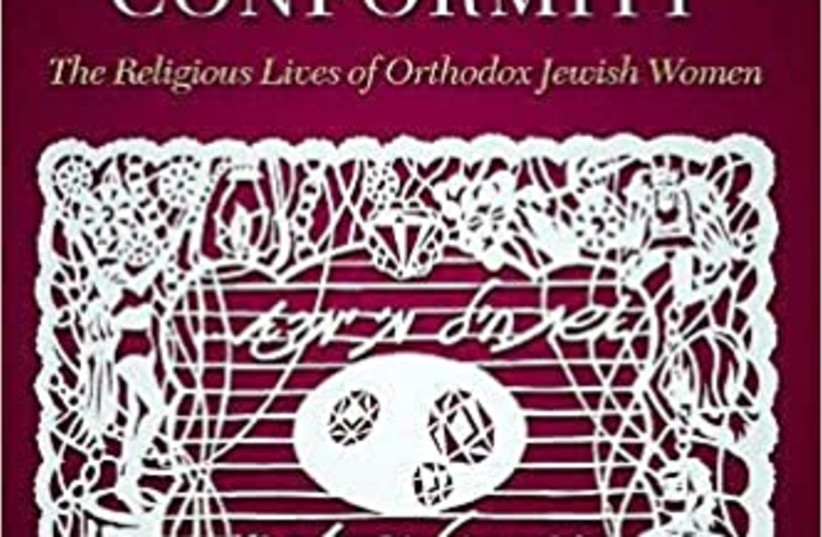Back in 1997, returning to the UK after 17 years spent in Israel, academic Lindsey Taylor-Guthartz decided that the topic she wanted to research for her doctorate was the religious lives of Orthodox Jewish women in Britain. In Israel she had participated in pioneering programs aimed at redefining some long-established assumptions about women’s roles in Orthodox Jewish life. On her return to London, she discovered that few of these ideas had filtered through. In Britain’s Orthodox Jewish environment she encountered an unfamiliar landscape as far as women’s religious lives were concerned, and decided to examine it in detail.
As she explains, this decision brought with it a special academic challenge. As an observant Jewish woman herself, she could not distance herself from the people whose religious lives she proposed to put under the microscope. She was, in effect, researching her own community – and this carried the risk of prejudicing the objectivity which is an essential component of any work of scholarship.
Taylor-Guthartz evaded this danger through the meticulous academic rigor with which she approached her study. She describes in detail the techniques she used to explore women’s religious lives and allow their voices to be heard. To illuminate her findings, she draws extensively on the work of leading academics and authors. The bibliography that she attaches to her study runs to no less than 18 pages, and is a potential treasure house for readers eager to expand their understanding of this fascinating aspect of Jewish life.
Taylor-Guthartz devotes one chapter to descriptions of Orthodox women’s experiences, including the denigration by some Orthodox men of long-established practices that women have learned from their mothers. She includes observations on the interaction between the religious lives of Orthodox men and those of Orthodox women, and also recounts some of the problems women face in reconciling a Jewish and a Western way of life.
Other chapters describe the official and unofficial roles religious women play both in the Orthodox community and in the family setting. Her in-depth examination of the world of Orthodox Jewish women leads her to a number of discoveries, for example that even within Orthodoxy there are considerable variations in practice. She identifies three different groups of Orthodox women in Britain: haredi, Modern Orthodox and traditionalist. Within each group she finds different patterns of belief, practice and world-view.
Haredi women, she found, maintained the tradition of rejecting Western liberal influences and maintaining gender separation, undertaking a whole range of practices related to these values.
Modern Orthodox women on the other hand, she discovered, have responded to current feminist influences by seeking greater participation in community religious life and strengthening women’s role in religious and community affairs.
Traditionalist women tend to reject the call by modernists for a greater involvement by women in communal or religious matters. Little concerned with the stringencies of Halacha, their focus is on maintaining, honoring and protecting the age-old Jewish customs and practices they inherited from their families.
In a fascinating appendix, Taylor-Guthartz lists scores of Jewish customs she learned about during the fieldwork that formed the basis of her study. For example she discovered 26 of them aimed at avoiding the evil eye or bringing good luck. They range from kissing a child three times and spitting between each kiss, to not counting money in your purse or not giving knives as a present.
There are similar lists of customs related to finding a marriage partner, getting pregnant, ensuring a good outcome to a pregnancy, giving birth, and so on. Customs intended to protect children include tying a red thread on the baby’s cot or its clothes, placing the mohel’s knife under a baby boy’s mattress on the night before circumcision, and piercing a baby girl’s ears during the first 30 days to improve her eyesight.
Many readers will greatly appreciate the glossary of some 200 Hebrew and Yiddish terms that Taylor-Guthartz includes toward the end of her book. From agunah (a woman unable to obtain a divorce from a recalcitrant or absent husband) to “zikhrono livrakha” (“May his memory be a blessing” – a phrase used referring to a deceased individual), the list is invaluable in assisting understanding of her research. It is also a teaching aid in its own right; it is most unlikely that any reader would know the meaning of all the terms she includes.
Challenge and Conformity opens up for our understanding a subject of immense importance to Judaism and the Jewish community. The religious lives of Orthodox women is a topic that has previously attracted little research. Taylor-Guthartz approaches it with academic skill and real empathy for the women she interviews and their communities. We learn of the great variety of women’s beliefs, customs and practices that are spread across the Orthodox Jewish world and, through Taylor-Guthartz’s eyes, we gain a greater understanding and appreciation of Jewish life that might otherwise have remained hidden.

Challenge and Conformity: The Religious Lives of Orthodox Jewish Women
By Lindsey Taylor-Guthartz
The Littman Library of Jewish Civilization
336 pages; $44.95
